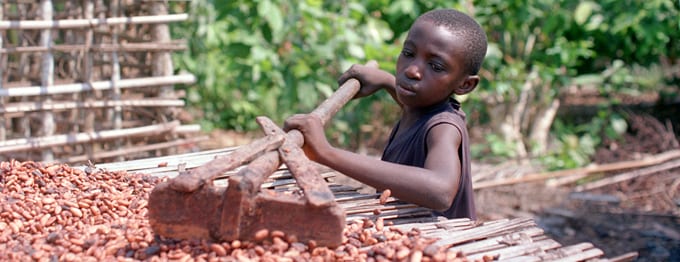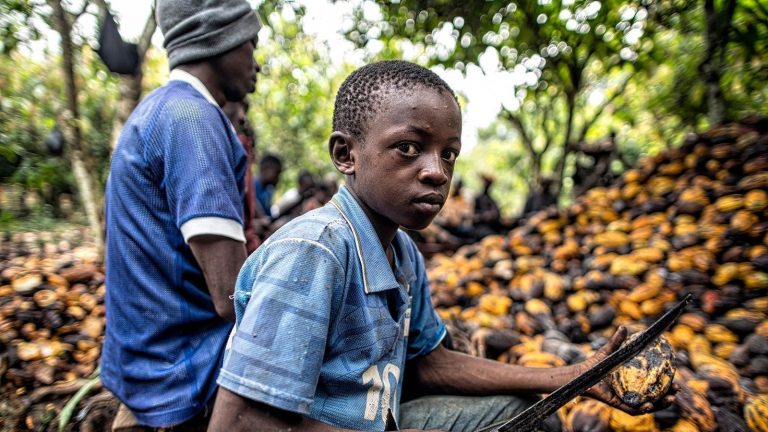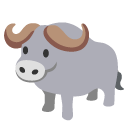
Child labour is rife in Ivory Coast, where major chocolate brands source their cocoa from. Photo TND Getty

Child Labor And Slavery In The Chocolate Industry

Deep, dark secret
A piece of information that is extremely private and confidential, usually implied to be embarrassing, incriminating, or shameful.
I’ve carried my fear of clowns as a deep, dark secret for many years now.
Many saw her as a perfect candidate, but no one could have known she had a deep, dark secret from her past.
The Free Dictionary
But the star spent years hiding a dark secret.
Times, Sunday Times (2012)
She begins to suspect that there is a dark secret in Nash’s past.
Times, Sunday Times (2016)
He is torn between wanting justice and exposing a dark secret he knows may save her.
The Sun (2009)
Collins Cobuild


1 By eating chocolate are we fuelling slavery?
30 jul. 2021
2 The Challenge of Chocolate and Forests
10 mrt. 2021
3 Slavery in the Chocolate Industry
Back to menu IMPORTANT CONTENT
23 jan. 2011
“The Dark Side of Chocolate,” “Slavery in the Chocolate Industry,” and “Chocolate Child Slaves” are all documentaries and articles that shed light on the issue of child labor and slavery in the cocoa industry. Here are some key points:
Child labor and slavery are prevalent in the cocoa industry, particularly in West Africa where most of the world’s cocoa is grown.
Children as young as 5 years old are forced to work long hours on cocoa farms, often in hazardous conditions.
Many of these children are trafficked from neighboring countries, such as Burkina Faso and Mali, to work on cocoa farms in Ivory Coast and Ghana.
These children are often denied an education and suffer from physical and emotional abuse.
The use of child labor and slavery in the cocoa industry has been known for decades, but little has been done to address the problem.
Many of the world’s largest chocolate companies have been accused of using cocoa beans produced by child labor and slavery.
While some companies have made efforts to address the issue, such as certification programs and community development projects, progress has been slow and more needs to be done to eradicate child labor and slavery from the cocoa industry.
Consumers can play a role in addressing this issue by choosing to buy chocolate that is certified as slavery-free, supporting companies that are taking action to address the problem, and advocating for stronger laws and regulations to combat child labor and slavery in the cocoa industry.
4 Documentary. The Dark Side Of Chocolate
21 jan. 2012
5 The Dark Side of Chocolate – Child Slavery
24 jul. 2012
6 Chocolate Child Slaves- CNN
16 jan. 2012
Licentie Creative Commons-licentie – Naamsvermelding (hergebruik toegestaan)
Bronvideo’s Toeschrijvingen bekijken
IMPORTANT CONTENT
7 The Secret Ingredient of Chocolate
8 Shady Chocolate HD – Miki Mistrati
19 aug. 2014
9 Child Slaves and the Chocolate – CNN
21 jan. 2012
Licentie Creative Commons-licentie – Naamsvermelding (hergebruik toegestaan)
Bronvideo’s Toeschrijvingen bekijken
10 Fair trade in cocoa from the Ivory Coast
6 dec. 2018
11 De geschiedenis van chocolade – Deanna Pucciarelli
16 mrt. 2017
12 Ecuador’s cocoa farmers making fair trade chocolate
10 apr. 2017
13 Why Fair Trade Chocolate Isn’t as Fair as You Think | Emily Stone
14 mrt. 2018
1:46 What is Most Ironic About the Story of Chocolate?
2:40 What is Wrong With The Current Chocolate System?
4:31 What Happens to the $6 I Spend on My Chocolate Bar?
7:12 When Did You Fall in Love With Chocolate?
8:27 Why Did you Found Uncommon Cacao?
11:41 Meeting the First Cacao Farmers
15:02 Scaling Up The Model
15:58 Why “Uncommon”?
16:49 What’s Wrong With Fair Trade?
14 Tree to Bar || How to Make Chocolate Every Step
7 dec. 2017
15 Mother Africa – History Of Africa with Zeinab Badawi [Episode 1]
10 apr. 2020
16 Cattle, Crops and Iron – History Of Africa with Zeinab Badawi [Episode 2]
10 apr. 2020
17 Chocolate industry tackles child slavery
18 Slavery in Hershey’s Chocolate
Back to menu IMPORTANT CONTENT
10 mei 2012
20 Child workers boost Ivory Coast chocolate industry
20 nov. 2015
21 Chocolate Production
Back to menu IMPORTANT CONTENT
6 feb. 2006
22 – 16×9 – Child Labour: The Dark Side of Chocolate
13 aug. 2012
23 – Top 10 Cocoa Producing Countries in the World
12 mei 2020
Top 10 Cocoa Producing Countries in The World
Welcome to Displore and thanks for watching. In this video we will be bringing you the top 10 cocoa producing countries in the world. Cocoa beans were first brought over to Europe by Christopher Columbus, and then later, Hernán Cortés, who gave samples of cacao to King Charles of Spain in 1528. Most of the world’s cocoa is grown in a narrow belt, give or take, of around 20 degrees either side of the equator, as it offers the perfect conditions for growing cocoa. The cocoa tree needs high temperatures, humid conditions and plenty of rainfall to grow successfully. For these reasons, cocoa is produced predominantly in the hot and humid regions of Africa, Asia, Central and South America and Australia. Cocoa was first harvested in what is today Central America. Soon, though, it became popular around the world, and it is now produced in many regions worldwide.
If you are new here, welcome, be sure to subscribe and turn on notifications so you don’t miss any of our videos.
Nations across four continents make the top 10, with four of the top five nations found in Africa. Cocoa beans are of different types and characteristics depending on where they come from. So with any firther delay here are the top 10 cocoa producing countries in the world.
10. Colombia 56,808 Tonnes Per Annum
Colombia is a country located in the north of South America, with a population of 48.2 million people spread over a total of1,141,748 km2. The economy of Colombia is mostly fuelled by science and technology, infrastructure and agriculture. One of the most cultivated crops in Colombia is cocoa which is amongst the most exported products that contribute to the $355.163 billion yearly GDP. Colombia is the tenth largest cocoa producer in the world yielding 56,808 tonnes of cocoa, grown on over 200,000 hectares of land. The industry supports the livelihoods of 50,000 farmers that each cultivates an average of 3.5 hectares.Colombia produces some of the finest cocoa beans in the world and they mostly grow the highly sought after Crillio and Trinitario varieties. It is grown in the regions of Santander, the north of Antioquia and the south of Córdoba.
9. Dominican Republic. 86,599 Tonnes Per Annum
The Dominican Republic is a country located on the island of Hispaniola in the Greater Antilles archipelago of the Caribbean region. The Dominican Republic is the second-largest nation in the Antilles by area after Cuba at 48,671km2 and third by population with approximately 10.5 million people of whom approximately 3.3 million live in the metropolitan area of Santo Domingo, the capital city.The Dominican Republic is the largest cocoa producer in the Caribbean with 86,599 tonnes in 2017 and is a leader in sustainable, fair-trade and organic cocoa.The cocoa industry is clearly important to the economy of the island as it sustains 40,000 farmers, employs 350,000 people and earned the country $261 million. The Dominican Republic has historically been known for two different types of cocoa: a buttery, cheaper product known as Sanchez and a drier, better-fermented bean called Hispaniola. The island is aiming to considerably increase its cocoa yields and in the last decade have grown their cocoa exports by 322% and aim to triple it by 2027.
8. Peru 121,825 Tonnes Per Annum
Peru is a country in western South America bordered in the north by Ecuador and Colombia, in the east by Brazil, in the southeast by Bolivia, in the south by Chile, and in the west by the Pacific Ocean. At 1.28 million km2, Peru is the 19th largest country in the world, and the third largest in South America. Cocoa most likely originated in the Amazon basin around Peru and now Peruvian chocolate is considered to be some of the finest in the world. Peru produced a total of 121,825 tonnes of cocoa in 2017 and is seeing rapid growth each year. Over half of their cocoa exports are beans with 20% being organic and the rest is made up of post-processed products such as cocoa butter, liquor, powder and husks.Cocoa plantations are spread throughout the country with the main growing areas in La Convención and Lares, Huallaga, Apurímac-Ene and Alto Marañón, all in the Eastern Andes.
7. Ecuador. 205,955 Tonnes Per Annum
Ecuador officially the Republic of Ecuador is a country in north-western South America, bordered by Colombia on the north, Peru on the east and south, and the Pacific Ocean on the west. The capital city is Quito, which is also its largest city and has a total population 17.1 million people living in an area of 283,561km2. Ecuador brings in a total GDP of about $106.289 billion and some of it comes
Top 10 Cocoa Producing Countries in the World
31 dec. 2021
12 mei 2020
Top 10 Cocoa Producing Countries in The World
Welcome to Displore and thanks for watching. In this video we will be bringing you the top 10 cocoa producing countries in the world. Cocoa beans were first brought over to Europe by Christopher Columbus, and then later, Hernán Cortés, who gave samples of cacao to King Charles of Spain in 1528. Most of the world’s cocoa is grown in a narrow belt, give or take, of around 20 degrees either side of the equator, as it offers the perfect conditions for growing cocoa. The cocoa tree needs high temperatures, humid conditions and plenty of rainfall to grow successfully. For these reasons, cocoa is produced predominantly in the hot and humid regions of Africa, Asia, Central and South America and Australia. Cocoa was first harvested in what is today Central America. Soon, though, it became popular around the world, and it is now produced in many regions worldwide.
If you are new here, welcome, be sure to subscribe and turn on notifications so you don’t miss any of our videos.
Nations across four continents make the top 10, with four of the top five nations found in Africa. Cocoa beans are of different types and characteristics depending on where they come from. So with any firther delay here are the top 10 cocoa producing countries in the world.
10. Colombia 56,808 Tonnes Per Annum
Colombia is a country located in the north of South America, with a population of 48.2 million people spread over a total of1,141,748 km2. The economy of Colombia is mostly fuelled by science and technology, infrastructure and agriculture. One of the most cultivated crops in Colombia is cocoa which is amongst the most exported products that contribute to the $355.163 billion yearly GDP. Colombia is the tenth largest cocoa producer in the world yielding 56,808 tonnes of cocoa, grown on over 200,000 hectares of land. The industry supports the livelihoods of 50,000 farmers that each cultivates an average of 3.5 hectares.Colombia produces some of the finest cocoa beans in the world and they mostly grow the highly sought after Crillio and Trinitario varieties. It is grown in the regions of Santander, the north of Antioquia and the south of Córdoba.
9. Dominican Republic. 86,599 Tonnes Per Annum
The Dominican Republic is a country located on the island of Hispaniola in the Greater Antilles archipelago of the Caribbean region. The Dominican Republic is the second-largest nation in the Antilles by area after Cuba at 48,671km2 and third by population with approximately 10.5 million people of whom approximately 3.3 million live in the metropolitan area of Santo Domingo, the capital city.The Dominican Republic is the largest cocoa producer in the Caribbean with 86,599 tonnes in 2017 and is a leader in sustainable, fair-trade and organic cocoa.The cocoa industry is clearly important to the economy of the island as it sustains 40,000 farmers, employs 350,000 people and earned the country $261 million. The Dominican Republic has historically been known for two different types of cocoa: a buttery, cheaper product known as Sanchez and a drier, better-fermented bean called Hispaniola. The island is aiming to considerably increase its cocoa yields and in the last decade have grown their cocoa exports by 322% and aim to triple it by 2027.
8. Peru 121,825 Tonnes Per Annum
Peru is a country in western South America bordered in the north by Ecuador and Colombia, in the east by Brazil, in the southeast by Bolivia, in the south by Chile, and in the west by the Pacific Ocean. At 1.28 million km2, Peru is the 19th largest country in the world, and the third largest in South America. Cocoa most likely originated in the Amazon basin around Peru and now Peruvian chocolate is considered to be some of the finest in the world. Peru produced a total of 121,825 tonnes of cocoa in 2017 and is seeing rapid growth each year. Over half of their cocoa exports are beans with 20% being organic and the rest is made up of post-processed products such as cocoa butter, liquor, powder and husks.Cocoa plantations are spread throughout the country with the main growing areas in La Convención and Lares, Huallaga, Apurímac-Ene and Alto Marañón, all in the Eastern Andes.
7. Ecuador. 205,955 Tonnes Per Annum
Ecuador officially the Republic of Ecuador is a country in north-western South America, bordered by Colombia on the north, Peru on the east and south, and the Pacific Ocean on the west. The capital city is Quito, which is also its largest city and has a total population 17.1 million people living in an area of 283,561km2. Ecuador brings in a total GDP of about $106.289 billion and some of it comes
24 Big Chocolate: US Supreme Court to weigh in on child slavery lawsuit against Nestle, Cargill
22 apr. 2021
 keep on busting the creeps in corporations
keep on busting the creeps in corporations



 My heart is breaking for the poor little children this happened to & I think they are entitled to a huge lump sum law suit in court & pray they win!!! These monsters are dirtier than any creature among all creatures on earth!!!
My heart is breaking for the poor little children this happened to & I think they are entitled to a huge lump sum law suit in court & pray they win!!! These monsters are dirtier than any creature among all creatures on earth!!! ️
️ =
= ️
️ =
= =
= ️
️25 Raising the Bar, a world without slavery in any chocolate | Ynzo van Zanten | TEDxYouth@HNLBilthoven
24 mei 2017
26 Changing the way we think about chocolate | Will Lydgate | TEDxBerkleeValencia
22 mei 2016
27 U.S. proposes ban on cocoa from the Ivory Coast over evidence of forced child labor
9 aug. 2019

28 A Dutch chocolate company’s fight to end illegal child labor
11 jul. 2021
29 – 100% of chocolate can be traced back to child labour…and worse
Back to menu IMPORTANT CONTENT
29 jul. 2021
30 Cocoa: Food of the Gods | Simon Waslander | TEDxUniversityofGroningen
23 apr. 2015
31 TEDxHelsinki – David Wolfe — Passion for chocolate
32 TEDxSinCity – Shawn Stevenson – How Chocolate Can Save The World
3 jun. 2011
33 The craft chocolate revolution — from bean to bar | Gabe Davidson | TEDxWellington
9 sep. 2014
34 The geometry of chocolate: Nigel Nisbet at TEDxOrangeCoast
1 nov. 2012
35 Saving the world with chocolate | Alastair Gower | TEDxGlasgowCaledonianUniversity
25 jun. 2020
36 Can chocolate save the world?: Koen Dewettinck at TEDxGhent
24 sep. 2013
37 The Challenge of Child Labour and Chocolate
Back to menu IMPORTANT CONTENT
16 feb. 2021
38 The Harsh Realities of Child Laborers in the Cocoa Industry
4 nov. 2016
39 Sustainability in the Cocoa Sector – Challenges and possible solutions
6 jan. 2020
41 Cocoa: a sweet value chain
27 mei 2016
42 Cocoa farming in Cuban lands | SLICE
19 jan. 2021
43 Top 10 Cocoa Producing Countries in the World
12 mei 2020
Top 10 Cocoa Producing Countries in The World
Welcome to Displore and thanks for watching. In this video we will be bringing you the top 10 cocoa producing countries in the world. Cocoa beans were first brought over to Europe by Christopher Columbus, and then later, Hernán Cortés, who gave samples of cacao to King Charles of Spain in 1528. Most of the world’s cocoa is grown in a narrow belt, give or take, of around 20 degrees either side of the equator, as it offers the perfect conditions for growing cocoa. The cocoa tree needs high temperatures, humid conditions and plenty of rainfall to grow successfully. For these reasons, cocoa is produced predominantly in the hot and humid regions of Africa, Asia, Central and South America and Australia. Cocoa was first harvested in what is today Central America. Soon, though, it became popular around the world, and it is now produced in many regions worldwide.
If you are new here, welcome, be sure to subscribe and turn on notifications so you don’t miss any of our videos.
Nations across four continents make the top 10, with four of the top five nations found in Africa. Cocoa beans are of different types and characteristics depending on where they come from. So with any firther delay here are the top 10 cocoa producing countries in the world.
10. Colombia 56,808 Tonnes Per Annum
Colombia is a country located in the north of South America, with a population of 48.2 million people spread over a total of1,141,748 km2. The economy of Colombia is mostly fuelled by science and technology, infrastructure and agriculture. One of the most cultivated crops in Colombia is cocoa which is amongst the most exported products that contribute to the $355.163 billion yearly GDP. Colombia is the tenth largest cocoa producer in the world yielding 56,808 tonnes of cocoa, grown on over 200,000 hectares of land. The industry supports the livelihoods of 50,000 farmers that each cultivates an average of 3.5 hectares.Colombia produces some of the finest cocoa beans in the world and they mostly grow the highly sought after Crillio and Trinitario varieties. It is grown in the regions of Santander, the north of Antioquia and the south of Córdoba.
9. Dominican Republic. 86,599 Tonnes Per Annum
The Dominican Republic is a country located on the island of Hispaniola in the Greater Antilles archipelago of the Caribbean region. The Dominican Republic is the second-largest nation in the Antilles by area after Cuba at 48,671km2 and third by population with approximately 10.5 million people of whom approximately 3.3 million live in the metropolitan area of Santo Domingo, the capital city.The Dominican Republic is the largest cocoa producer in the Caribbean with 86,599 tonnes in 2017 and is a leader in sustainable, fair-trade and organic cocoa.The cocoa industry is clearly important to the economy of the island as it sustains 40,000 farmers, employs 350,000 people and earned the country $261 million. The Dominican Republic has historically been known for two different types of cocoa: a buttery, cheaper product known as Sanchez and a drier, better-fermented bean called Hispaniola. The island is aiming to considerably increase its cocoa yields and in the last decade have grown their cocoa exports by 322% and aim to triple it by 2027.
8. Peru 121,825 Tonnes Per Annum
Peru is a country in western South America bordered in the north by Ecuador and Colombia, in the east by Brazil, in the southeast by Bolivia, in the south by Chile, and in the west by the Pacific Ocean. At 1.28 million km2, Peru is the 19th largest country in the world, and the third largest in South America. Cocoa most likely originated in the Amazon basin around Peru and now Peruvian chocolate is considered to be some of the finest in the world. Peru produced a total of 121,825 tonnes of cocoa in 2017 and is seeing rapid growth each year. Over half of their cocoa exports are beans with 20% being organic and the rest is made up of post-processed products such as cocoa butter, liquor, powder and husks.Cocoa plantations are spread throughout the country with the main growing areas in La Convención and Lares, Huallaga, Apurímac-Ene and Alto Marañón, all in the Eastern Andes.
7. Ecuador. 205,955 Tonnes Per Annum
Ecuador officially the Republic of Ecuador is a country in north-western South America, bordered by Colombia on the north, Peru on the east and south, and the Pacific Ocean on the west. The capital city is Quito, which is also its largest city and has a total population 17.1 million people living in an area of 283,561km2. Ecuador brings in a total GDP of about $106.289 billion and some of it comesax
Top Cocoa Producing Countries in the world
16 jun. 2022
12 mei 2020
Top 10 Cocoa Producing Countries in The World
Welcome to Displore and thanks for watching. In this video we will be bringing you the top 10 cocoa producing countries in the world. Cocoa beans were first brought over to Europe by Christopher Columbus, and then later, Hernán Cortés, who gave samples of cacao to King Charles of Spain in 1528. Most of the world’s cocoa is grown in a narrow belt, give or take, of around 20 degrees either side of the equator, as it offers the perfect conditions for growing cocoa. The cocoa tree needs high temperatures, humid conditions and plenty of rainfall to grow successfully. For these reasons, cocoa is produced predominantly in the hot and humid regions of Africa, Asia, Central and South America and Australia. Cocoa was first harvested in what is today Central America. Soon, though, it became popular around the world, and it is now produced in many regions worldwide.
If you are new here, welcome, be sure to subscribe and turn on notifications so you don’t miss any of our videos.
Nations across four continents make the top 10, with four of the top five nations found in Africa. Cocoa beans are of different types and characteristics depending on where they come from. So with any firther delay here are the top 10 cocoa producing countries in the world.
10. Colombia 56,808 Tonnes Per Annum
Colombia is a country located in the north of South America, with a population of 48.2 million people spread over a total of1,141,748 km2. The economy of Colombia is mostly fuelled by science and technology, infrastructure and agriculture. One of the most cultivated crops in Colombia is cocoa which is amongst the most exported products that contribute to the $355.163 billion yearly GDP. Colombia is the tenth largest cocoa producer in the world yielding 56,808 tonnes of cocoa, grown on over 200,000 hectares of land. The industry supports the livelihoods of 50,000 farmers that each cultivates an average of 3.5 hectares.Colombia produces some of the finest cocoa beans in the world and they mostly grow the highly sought after Crillio and Trinitario varieties. It is grown in the regions of Santander, the north of Antioquia and the south of Córdoba.
9. Dominican Republic. 86,599 Tonnes Per Annum
The Dominican Republic is a country located on the island of Hispaniola in the Greater Antilles archipelago of the Caribbean region. The Dominican Republic is the second-largest nation in the Antilles by area after Cuba at 48,671km2 and third by population with approximately 10.5 million people of whom approximately 3.3 million live in the metropolitan area of Santo Domingo, the capital city.The Dominican Republic is the largest cocoa producer in the Caribbean with 86,599 tonnes in 2017 and is a leader in sustainable, fair-trade and organic cocoa.The cocoa industry is clearly important to the economy of the island as it sustains 40,000 farmers, employs 350,000 people and earned the country $261 million. The Dominican Republic has historically been known for two different types of cocoa: a buttery, cheaper product known as Sanchez and a drier, better-fermented bean called Hispaniola. The island is aiming to considerably increase its cocoa yields and in the last decade have grown their cocoa exports by 322% and aim to triple it by 2027.
8. Peru 121,825 Tonnes Per Annum
Peru is a country in western South America bordered in the north by Ecuador and Colombia, in the east by Brazil, in the southeast by Bolivia, in the south by Chile, and in the west by the Pacific Ocean. At 1.28 million km2, Peru is the 19th largest country in the world, and the third largest in South America. Cocoa most likely originated in the Amazon basin around Peru and now Peruvian chocolate is considered to be some of the finest in the world. Peru produced a total of 121,825 tonnes of cocoa in 2017 and is seeing rapid growth each year. Over half of their cocoa exports are beans with 20% being organic and the rest is made up of post-processed products such as cocoa butter, liquor, powder and husks.Cocoa plantations are spread throughout the country with the main growing areas in La Convención and Lares, Huallaga, Apurímac-Ene and Alto Marañón, all in the Eastern Andes.
7. Ecuador. 205,955 Tonnes Per Annum
Ecuador officially the Republic of Ecuador is a country in north-western South America, bordered by Colombia on the north, Peru on the east and south, and the Pacific Ocean on the west. The capital city is Quito, which is also its largest city and has a total population 17.1 million people living in an area of 283,561km2. Ecuador brings in a total GDP of about $106.289 billion and some of it comes
44 – 2 All About Cocoa Beans
Back to menu IMPORTANT CONTENT
28 aug. 2016
Is your Bloomed Chocolate Ruined? Find out!
Alchemist John goes through the various types of cocoa beans and how to choose the right one for your taste.


45 Harvesting Cacao | How to Make Everything: Chocolate Bar
4 feb. 2016
46 Madagascar’s world-class cocoa, a bitter sweet cash crop
25 dec. 2016
47 Konye’s Cocoa – English Version
14 okt. 2015
48 Cargill interview: Cocoa sustainability focus
24 jan. 2021
50 – 1. The Journey of Cocoa Beans – from Ivory Coast to Chocolat Frey AG
10 dec. 2018
51 DOCUMENTARY: Adjeikrom Ghana’s Cocoa Haven
52 How the Chocolate Industry Still Profits from Child Labor | ENDEVR Documentary
Back to menu IMPORTANT CONTENT
5 jan. 2022
53 Chocolate’s Darkest Secrets: A Bitter Reality | Cocoa Farming & Child Labour Documentary
25 jan. 2022
This film was first released in 2019.


54 Ivory Coast to Paris – Chocolate around the World (Global Food – Full Documentary) | TRACKS
18 mei 2018
55 Envoyé spécial. Cacao : les enfants pris au piège – 10 janvier 2019 (France 2)
14 jan 2019
Le travail des enfants dans les plantations a-t-il disparu, comme s’y est engagée l’industrie du chocolat en 2001 ? “Envoyé spécial” a enquêté en Côte d’Ivoire, premier producteur mondial de cacao.
En 2001, la lucrative industrie du chocolat s’engageait, sous la pression des ONG, à faire disparaître le travail des enfants dans les plantations où elle se fournit en cacao, et ce avant 2006. Dix-huit ans plus tard, cette promesse a-t-elle été tenue ?
La Côte d’Ivoire, premier producteur mondial, a déployé de réels efforts pour endiguer ce fléau. Des écoles ont été construites, les cultivateurs ont été formés. Partout à la télévision, des avis rappellent que le travail des enfants est interdit. Pourtant, il n’a pas disparu.
Dans des zones isolées, des enfants exploités.
Loin dans la forêt, au bout de routes presque impraticables, dans des zones isolées, “Envoyé spécial” a découvert des enfants retenus malgré eux dans des plantations. Ils sont séparés de leurs parents, parfois revendus par des trafiquants, et leurs maigres revenus sont captés par des groupes armés.
Une enquête de Paul Moreira et Pedro Brito Da Fonseca (Premières lignes)
56 Le cacao illégal de Nestlé
21 jan 2019
Nestlé se vante de n’utiliser que du cacao 100% équitable dans son chocolat suisse. L’équipe de Mise au point a remonté la filière de ces fèves jusqu’en Côte d’Ivoire et découvert une réalité bien différente. Une partie de ce cacao provient de réserves protégées où les récoltes sont interdites. Enquête.
« Nestlé précise que les fèves de cacao utilisées dans son usine de Broc proviennent exclusivement de sa filière éthique le Plan Cacao ».
58 Countries Around The WORLD That Produce The MOST Cocoa..
12 okt 2022 #Cocoa #CocoaFarming
Countries Around The WORLD That Produce The MOST Cocoa..
Welcome back to Down On The Farm, today on the channel we are going to feature The Top Cocoa Producing Countries In The World + other related news. Cocoa is the dried and completely fermented fatty seed of the fruit of the small evergreen cocoa tree (Theobroma cacao) that is native to the Amazon rainforest. The word ‘cocoa’ comes from the Spanish term ‘cacao,’ which has in turn been derived from the Nahuatl term ‘cacahuati.’ Cocoa is a valuable crop that was first cultivated in the equatorial region of South America approximately 5,300 years ago, and it is believed that the Mayan and the Aztec people were the first to grow the cocoa trees successfully. The cocoa trees are mainly grown in tropical zones about 20° to the north and south of the Equator, where favorable climatic conditions for the cultivation of cocoa trees are available. The cocoa beans serve as the main ingredients for making chocolates and many Mesoamerican foods. The following article discusses the top 10 cocoa-producing countries in the world.
Cote D’Ivoire – 2,200,000 Tons. Located in West Africa, Cote d’Ivoire is the biggest cocoa producer globally, producing about 2,200,000 tons of cocoa beans annually. Cote d’Ivoire accounts for about 38% of the total cocoa bean production in the world. It is to be noted that the national economy of Cote d’Ivoire is highly dependent on cocoa prices and a significant portion of the country’s export revenue comes from the export of cocoa beans. Ghana – 800,000 Tons. The Republic of Ghana – another West African country, is the second-largest cocoa producer globally, producing about 800,000 tons of cocoa beans annually. Cocoa is the mainstay of the agricultural sector of Ghana, accounting for about one-third of the country’s export revenue. The favorable climatic conditions in Ghana have increased the cultivation of Ghana’s cocoa crop by more than 20% in the previous growing season. It is to be noted that although Cote d’Ivoire is the largest producer and exporter of cocoa beans in the world, Ghana is also well-known for producing high-quality cocoa beans that command a premium price of Cocoa in the world market. The high-quality Cocoa in Ghana is mainly due to the country’s grading system that takes only top-quality cocoa beans from the farmers. Watch till the end for more about The Top Cocoa Producing Countries In The World and other related news.
59 Most Expensive Chocolate in the World (Heirloom Ingredients of Negros Occidental Philippines)
9 nov 2023
Negros Occidental is an ultimate food destination for those who want to experience eating the best of the Philippines. The island is known as the Sugar Capital of the Philippines where you can find the best restaurants and the most beautiful heritage homes that have been passed down for many generations.
In our last video for our Western Visayas series, we’re going to talk about the heirloom ingredients of Negros like Batwan (Garcinia binucao), the rare Criollo Cacao, the healthy Tinigib Corn (White Visayan Corn), and Kalingag (Philippine Cinnamon). We think that each of these ingredients deserve to be used more in our kitchens and should be appreciated here and abroad for generations to come. Get to know how these heirloom ingredients can a significant role in the food industry in the Philippines now!
Note:
1:09 – Negros Occidental is one of the 6 provinces of Region VI.
7:46 – Correction on the location, it is supposed to be Barangay Atipuluan. Thank you for sending your comments!
Special thanks to:
Arnel Calago, Tinigib Corn Farmer
Camingawan Tagukon Farmers Association
FB: Arnel Tinigib Torion Calago
Christopher Fadriga, Criollo Cacao Grower
Owner, Chris Fadriga Cacao Nursery
Barangay Atipuluan, Bago City, Dakbanwa Sang Bago
0956 591 9071
60 Candid Camera Classic: Gorgeous Teacher
10 jan. 2017
61 Disappearing Toilet Prank
10 mei 2011
